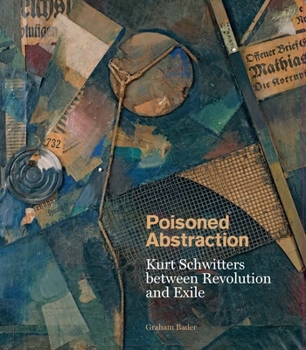Poisoned Abstraction: Kurt Schwitters Between Revolution and Exile
A definitive resource, full of fresh insights and new revelations, on one of the most influential interwar artists This richly illustrated book offers a definitive new assessment of the oeuvre of Kurt Schwitters (1887-1948), a central figure of the interwar European avant-garde. Active as an artist, designer, publisher, performer, critic, poet, and playwright, Schwitters is best known for intimately scaled, materially rich collages and assemblages made from found objects--often refuse--that the artist described as having lost all contact with their role and history in the world at large. But as Graham Bader explores, such simple separation of art from life is precisely what Schwitters's "poisoned abstraction" calls into question. Considering works reaching from Schwitters's earliest collage-based pieces of 1918-19, through his 1920s advertising designs, to his seminal environmental installation the Merzbau, Bader carefully unpacks the meaning behind such projects and sheds new light on the tumultuous historical conditions in which they were made. In the process, he reveals a new Schwitters--aesthetically committed and politically astute--for our time. This authoritative account reframes our understanding of Schwitters's multifaceted artistic practice and explores the complex entwinement of art, politics, and history in the modern period.
Format:Hardcover
Language:English
ISBN:0300257082
ISBN13:9780300257083
Release Date:November 2021
Publisher:Yale University Press
Length:240 Pages
Weight:2.95 lbs.
Dimensions:0.9" x 9.7" x 11.2"
Customer Reviews
0 rating





